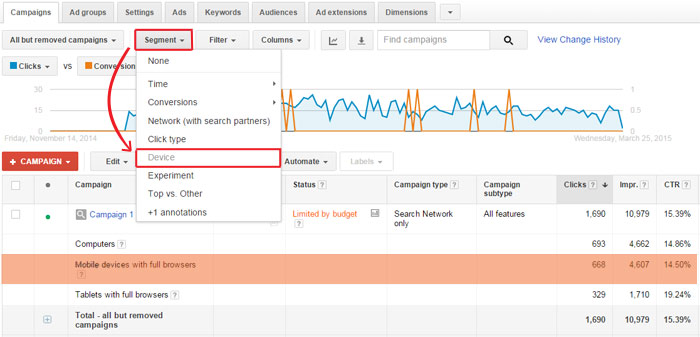Let’s face it, smartphones have become an essential part of our daily lives.
According to Our Mobile Planet: Australia reports, 77% of us won’t leave home without our devices.
We use our phones nearly everywhere. Whether that be at home, while shopping, at work & even while we spend hours on end in the doctor’s waiting room.
In the next 5 years, we can expect our phones to be the most dominating medium in how we interact online.
We feel a constant need to stay informed. We’re addicted to information and we want to be the first in the know. In light of this, there’s no surprise that smartphones are increasingly becoming a major platform for search.
58% of Australian smartphone users search on their phones every single day. Since 2011 there’s been an exponential rise in how we use our smartphones in comparison to desktops and laptops. In the next 5 years, we can expect our phones to be the most dominating medium in how we interact online.
Take Advantage With AdWords
Mobile based optimisations are commonly overlooked within Adwords campaigns. It’s essential to fully optimise all accounts for all devices.
Mobile traffic is constantly on the rise, so target that traffic, if you aren’t already.
The following are some of the most important mobile adwords optimisations that will help you get that extra mobile traffic.
- Mobile friendly ad creatives
- Sitelinks
- Call out extensions
- Call extensions
- Mobile friendly website
Make sure that you include ad copies that are mobile preferred, by clicking the mobile preferred option alongside your ad text.
Keep sitelink extensions short and crisp. Use at least 6 different sitelinks to be able to split-test and determine the top performers. Recent changes mean that only description line 1 of your ad copy will show on mobile searches. Your sitelinks need to highlight the call to actions that you want to get across to your audience.
A recent addition to AdWords is call out extensions. Have at least 4 mobile-specific call-outs at any one time. Again these are an opportunity to highlight your most important call to actions, considering the limited advertising real-estate with mobile ads.
Mobile searches on Google only display the top 2 ads on page 1. You need to have your bidding strategy on point to appear in this space. It’s best to set mobile bid adjustments to guarantee prime positions on keywords that perform on mobile. This way you don’t bump up your overall CPC’s, but still maintain prime position.
Call extensions are a must, especially for trade industries. Setting up call extensions, and having the ‘click to call’ option for mobile search is key. A lot of the time, you’ll have leads using click to call, without even looking at your website. The lead gets enough information from your ad copy alone, and are already committed to call, making these leads an easy conversion.
Not everyone will be convinced by your ad copy alone. This is why your website needs to be mobile friendly. This no longer means having a mobile version of your normal website. You need to have a responsive website. As of April 21st, Google will be rolling out an algorithm change that will include mobile friendliness as an aspect in how they rank websites on mobile searches. So simply, if you don’t have a mobile friendly website, Google will punish you for it.
To check how your website ranks in mobile friendliness, use this tool or get a FREE website report from us.
Your Campaign Is Mobile Ready, Now What?
So your campaign is mobile optimised and ready to go, great!
Adwords campaigns are never 100% complete. Just like with any sort of online advertising, you need to keep up with your competitors, industry trends, and continue to split test and improve your strategies.
Keep your campaign segmented by device so you can easily track how your mobile performance stacks up against other platforms. To view by device, click the ‘segment’ tab above your performance graph and choose ‘device’.

Monitor this segmentation closely, and just like with any other part of your campaign, don’t make any haste judgments. They could prove to be detrimental to your campaign. Give yourself sufficient time and sufficient data to make any judgments on how your campaign is performing.
Another segment useful in determining how mobile ads are performing, is click type. If I see that my sitelink clicks are low, I change them up, keep them relevant, and track any changes made. The same goes with headline clicks. Click to calls are also important to track. They can help determine how effective your ad text is alone.
Following all these steps will more than surely help you get a head start above the rest with your mobile performance.
So when you take this all into consideration, have you done what is necessary to target your audience searching on mobile?






